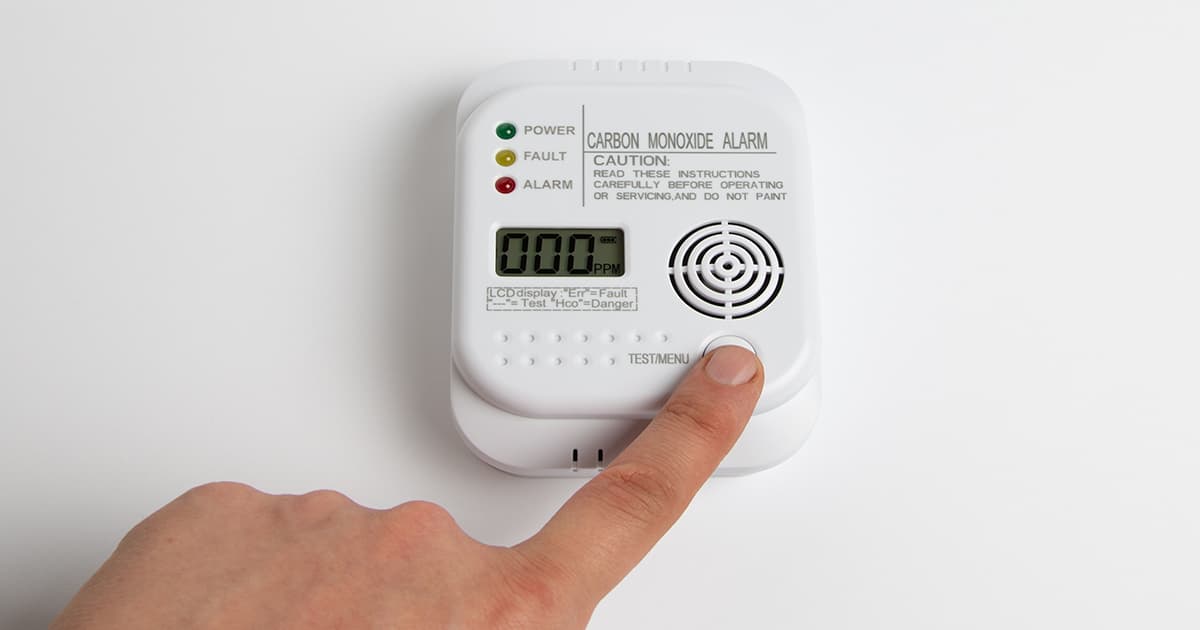How to keep your business safe from carbon monoxide

According to the Canadian Centre for Occupation Health and Safety, carbon monoxide poisoning leads to hundreds of deaths in North America each year. Over 50 people die from it every year in Canada. Carbon monoxide safety is just as important for your business as fire safety. Be informed and be prepared to take preventative measures to avoid carbon monoxide poisoning.
How is carbon monoxide created?
Carbon monoxide (CO) is formed when there is not enough air in a fuel-burning appliance to completely burn the fuel. Fuel sources that contain carbon create CO when they burn incompletely and include gasoline, oil, kerosene, propane, wood and coal. Carbon monoxide is also present in vehicle exhaust and cigarette smoke.
Why is carbon monoxide so dangerous?
CO is absorbed into the bloodstream 200 times faster than oxygen and prevents the body from absorbing it. CO is invisible and odourless so you may not know you have been exposed until it is too late. A person can be overcome by high concentrations of CO in minutes and can lose consciousness or even die with few warning signs. High levels or continuous exposure to CO can cause suffocation and loss of consciousness, coma, death or brain damage.
What types of businesses are at risk from carbon monoxide?
The most common workplace carbon monoxide risks are internal combustion engines. There is risk of exposure in warehouses, boiler rooms, petroleum refineries, pulp and paper production and in steel production. Welders, taxi drivers and mechanics are also at risk of CO exposure.
But any building with equipment that burns fuel can be a carbon monoxide hazard. People can be exposed to CO in confined spaces but it can be present in well-ventilated areas, large buildings and even outdoors. Chances are that your business has some sort of fuel-burning appliance and your staff and visitors could potentially be at risk of carbon monoxide poisoning.
Fuel-burning appliances that are potential CO sources include:
- Furnaces
- Boilers
- Natural gas dryers
- Fireplaces
- Natural gas ovens
- Gas-powered engines
- Natural gas space heaters
How can you prevent carbon monoxide poisoning in your place of business?
Maintenance and safety precautions are essential for protecting your business from carbon monoxide.
- Make sure your business has carbon monoxide alarms.
- Test and inspect your carbon monoxide detectors according to the manufacturer’s instructions and make sure to replace the batteries every six months or so.
- Check the vents on the exterior of your building to make sure they are not blocked by debris.
- Have heating systems and fuel-burning appliances professionally inspected every year.
- Replace diesel or gas equipment with electric equipment when possible.
- Improve ventilation if possible.
- Do not leave vehicles running near air vents.
- Educate staff about carbon monoxide.
How to test your carbon monoxide alarm
Testing your carbon monoxide detectors is easy and necessary. It should be done once a month.
- Press the test button on the carbon monoxide alarm. You should hear a piercing screech; this means the alarm is working.
- If you do not hear the alarm or it is too quiet, replace the batteries and try again.
- If your carbon monoxide detector still does not work, buy a new one as soon as you can.
What should you do if the carbon monoxide alarm goes off?
Make sure to have an emergency plan for your workplace, including emergency evacuation procedures.
- Evacuate the building.
- Call 911.
- Advise first responders of anyone who is unaccounted for.
What are the symptoms of carbon monoxide poisoning?
How fast symptoms of CO poisoning develop depends on factors like the concentration of carbon monoxide, the length of exposure, and how active people are. Symptoms of carbon monoxide poisoning include:
- Headaches
- Nausea
- Poor vision
- Shortness of breath
- Fatigue
- Muscle weakness
- Dizziness
- Confusion
- Chest pain



